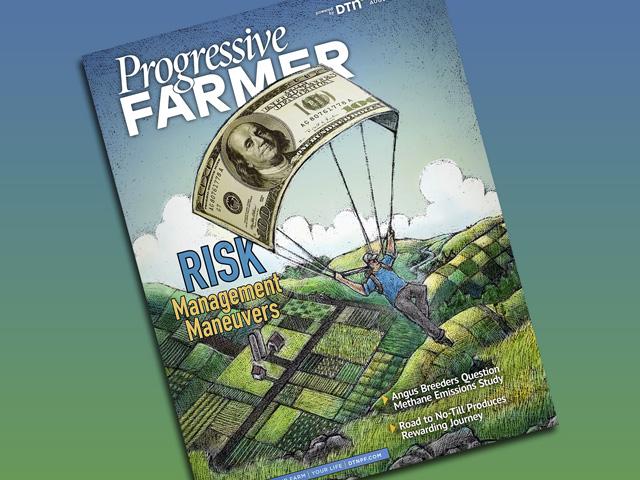How To Put Drones to Work
Illinois Farmer Provides Drone Spraying Tips
It's not uncommon to hear the signature buzz of a drone in the countryside. Drone spraying has steadily increased in popularity for both farmers and commercial applicators; but are they a good fit for everyone?
Augusta, Illinois, farmer Brady Holst started spraying with drones in 2020 and never looked back. Holst farms corn, soybeans and wheat, spraying his acres with both a self-propelled sprayer and two DJI Agras T30 drones. The drones predominately spray his fungicide on smaller or awkward-shaped fields. Holst said herbicide and insecticide applications on larger, square fields still work best with a ground sprayer.
Holst's advice for drone spraying, or hiring a custom drone applicator, includes the following tips:
P[L1] D[0x0] M[300x250] OOP[F] ADUNIT[] T[]
-- Know spray coverage and accuracy. The question Holst gets most often is about spray coverage. He said 2 gallons of fungicide in a drone provides the same coverage as 10 gallons with a ground sprayer. The down force from blades acts to both lift the drone and push pesticides to the crops, providing excellent coverage with a small amount of product. When hiring a custom drone applicator, Holst recommended asking about spray width accuracy. Although his drone advertises a 30-foot spray width, the coverage is closer to a 20-foot span.
-- Consider operator tech-savviness. Holst recommended researching different drone companies and controller set-ups to match the device to the operator's tech expertise. His biggest learning curves in the beginning were learning how to run the remote controller and learning to set up field layouts. Fortunately, field maps can be uploaded to the drone where spray spacing, direction and outlines are saved and recorded via controller. From there, he's developed a system of knowing when and where to launch, fill and refill the drones, he said.
-- Think about spray timing and conditions. Holst purchased his first drone as a backup for when fields were too wet for ground spraying or geography wasn't ideal for a spray plane. He said being able to spray fungicide as soon as they need to, regardless of weather or geography, has resulted in considerable yield increases. His neighbors have taken notice too, hiring Holst to spray smaller, last-minute patches when they get in a pinch.
-- Understand drones aren't a "launch it-and-leave it" technology (yet). Holst's DJI Agras T30 can spray 20 acres an hour, or 40 acres an hour with two drones. Each spray tank holds 8 gallons and sprays 2 gallons per hour. The drone can do 4 acres, or roughly five minutes, at a time before refills and battery swaps are needed.
-- Recognize technology advances and depreciation. Holst purchased his DJI Agras T30 plus batteries two years ago for around $30,000. Today, the DJI Agras T50 is nearly the same price but twice as fast, while the T30 sells for around $15,000 today. Although his T30 still works well, Holst said it's frustrating to know he could pay the same price today for better technology.
-- Look into licensing and certification. To fly a spray drone, the operator must have a drone pilot's license. Testing is administered by the Federal Aviation Administration (FAA), and Holst said getting licensed was more of a process than he anticipated. The steps to become a certified drone pilot are available on the FAA website (https://www.faa.gov/…). In Illinois, state law also requires all pesticide applicators to obtain a commercial pesticide applicator license (https://agr.illinois.gov/…).
-- Be mindful of security concerns. All drones are banned on miliary bases since they are always recording photos and videos. For farmers looking to spray near fields near cities or sensitive areas, FAA airspace restrictions could be an issue. Holst hasn't had any trouble with security concerns where he's flying, but said it's always a good practice to communicate with neighbors when flying a drone.
-- Calculate ROI. Compared to pricey ground sprayers, Holst thought $30,000 was a worthwhile investment. When first looking to purchase a drone, he calculated the drone would pay for itself in five years if it sprayed half of his corn fungicide acres. Instead, the drone paid for itself the first year since fields were too wet for ground application and spray planes couldn't reach corners with trees and small fields. For that reason, spray drones will always have a place on his farm, Holst said.
Find additional DTN articles on using drones at: https://www.dtnpf.com/…
(c) Copyright 2024 DTN, LLC. All rights reserved.






